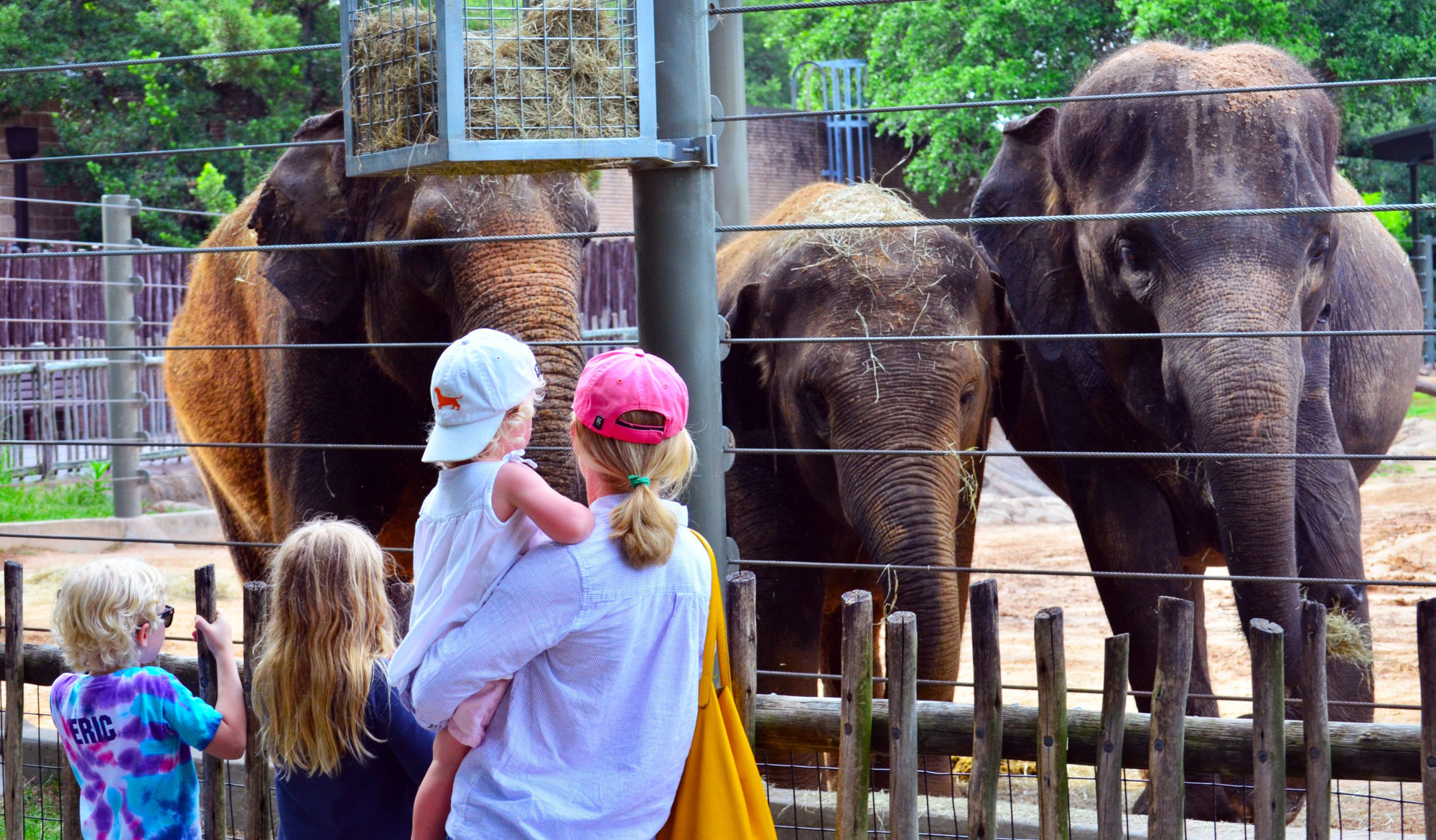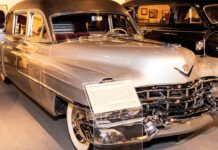Walk among the animals in an afternoon of exploration and education at the Houston Zoo next to Hermann Park.
Established in 1922, the Houston Zoo has invited millions of annual visitors to explore fifty-five acres of habitats bursting with more than 6,000 animals.
The second most visited zoo in the United States, the Houston Zoo brings guests within feet of feasting elephants, inches away from the black-tongued and wide-eyed giraffes, and face-to-window-to-face with chimpanzees.
A day spent at the Houston Zoo also rewards with an educational perspective; visitors learn about the real dangers of extinction facing many of the species on display, as well as the significant conservation efforts that the Houston Zoo employs around the world.
As they continue to expand into the early 2020’s (with exhibits featuring the Texas wetlands, Brazil, and Galapagos), the majority of the park remains open and accessible during construction efforts providing a seamless afternoon of animal exploration and education.
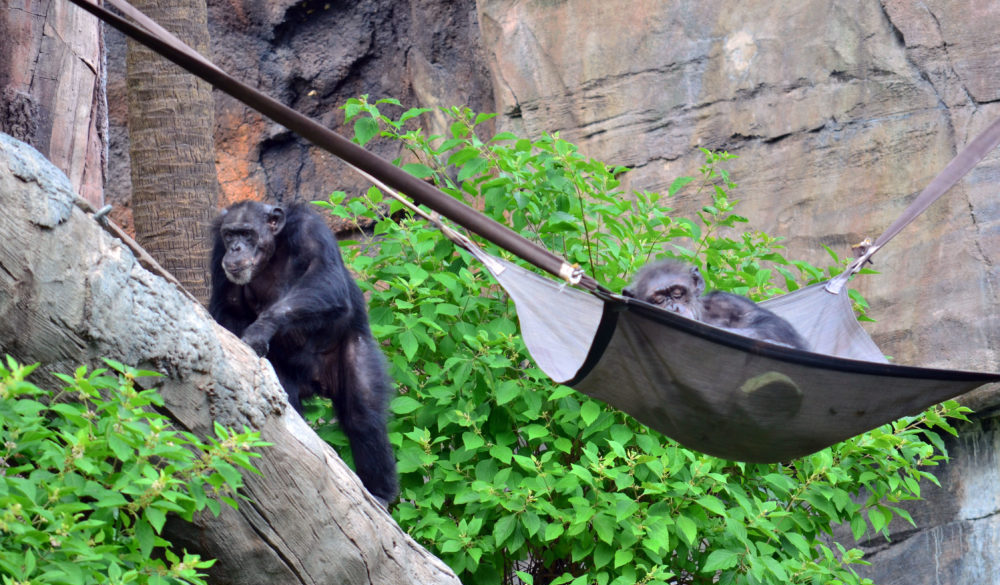
Planning Ahead
Embarking on your hike through the fifty-five acres of zoo exhibits does require a little advanced planning, particularly if you’ve got little ones in tow.
One important thing to keep in mind is that outside food and drink are permitted inside the zoo. Feel free to stock up a cooler so long as you don’t mind tugging it around the park (glass bottles, alcoholic drinks, and plastic straws are not allowed).
Though the many winding paths of the Houston Zoo will send you under tree canopies and into air-conditioned havens, there are still many places where the sun will find you, so pack sunscreen as necessary.
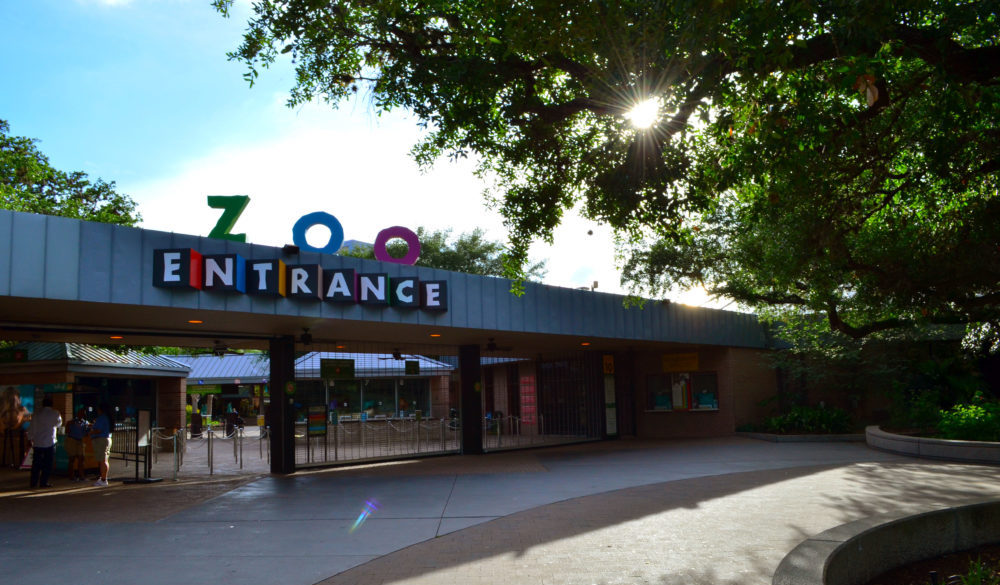
Arriving at the Houston Zoo
For many, the first daunting challenge of the zoo comes in finding parking. Free lots are available in front of the zoo and across Hermann Park Drive with overflow parking served at the McGovern Centennial Gardens lot on Hermann Drive.
Parking in the free lots fills fast (especially during summer and weekends), so plan to arrive earlier than later – usually within the first hour or two of opening. When at full capacity, you may be seeking out the paid garage at nearby Houston Museum of Natural Science or other smaller lots located around the neighboring Hermann Park.
The Houston Zoo encourages alternative transportation by offering a $2 adult discount and $1 child discount on admission when you present a Q Card or valid Metro ticket. Bus and MetroRail stops can be found along Fannin Street near Cambridge Street and Sunset Boulevard, making for a quick walk to the zoo’s gates.
You can also score a discount when the Houston Zoo partners with on-demand taxi services. For example, using “HOUSTONZOO” as a promo code in the Lyft app grants $10 off two rides to or from the Houston Zoo.
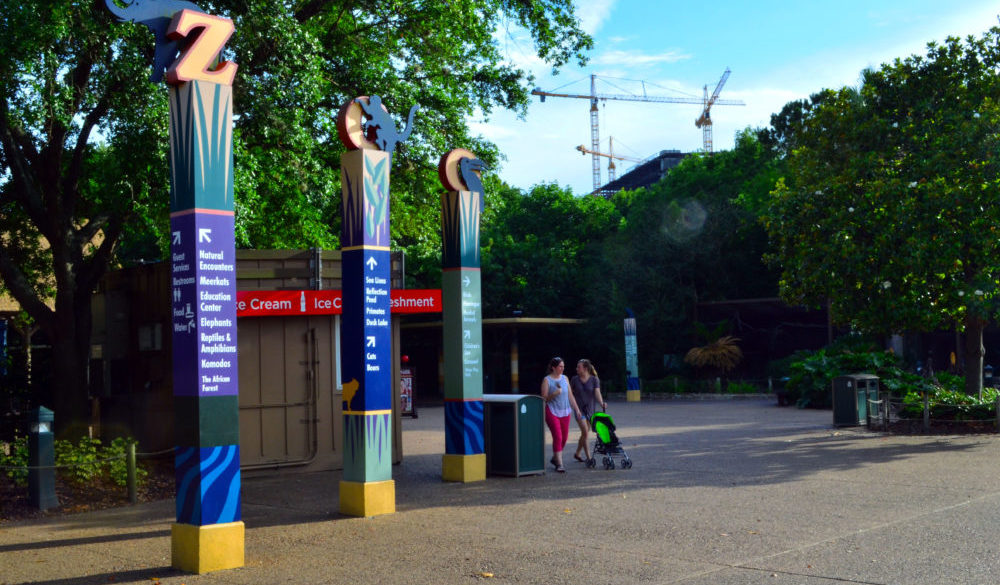
Through the Gates
With ticket in hand, head through the gates and keep your map nearby as it can be disorienting with bustling crowds and multiple directions to choose from just inside the front entrance.
To your left, Zoo markers will help straighten out your senses by pointing to the popular exhibits from the main entrance.
On your right, the Kipp Aquarium offers air-conditioned views of underwater creatures and the Macaw Cafe serves as one of two restaurants on campus.
Straight ahead, you can stop by the sea lion tank and head to the reflection pool just beyond.
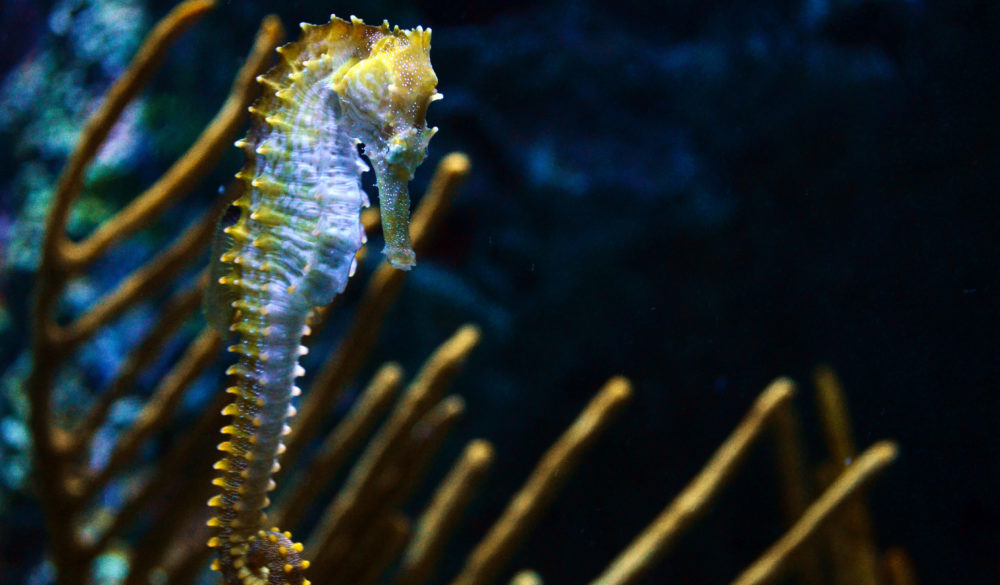
Red Panda and the Reflection Pool
Moving to your left, you’ll find Carruth Natural Encounters, a building that houses monkeys, otters, and sloths among many others. Here, animals from a variety of environments and ecosystems cohabitate making for a great first stop during your visit.
Just outside, you’ll find the building flanked by Toby, the ever-adorable red panda, and a family of meerkats greeting you just as you move towards the reflection pool.
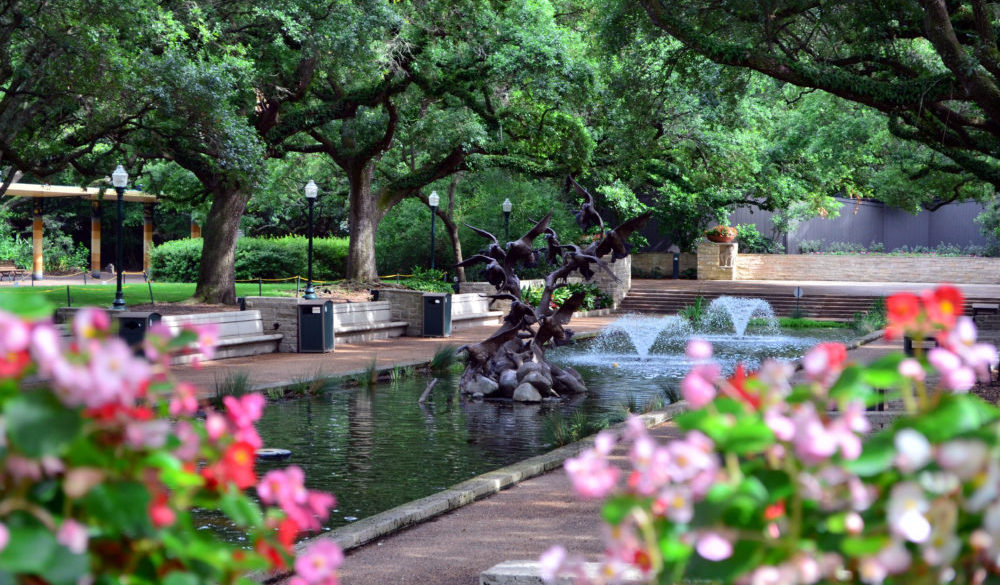
One of the central fixtures of the Houston Zoo, the reflection pool provides ample opportunities to relax, have lunch, and reorient. With air-conditioned buildings on both sides, this area offers plenty of escape from mid-day heat and is a great way to wrap up a summer day at the Houston Zoo.
The McNair Asian Elephant Habitat
Along the left path, just behind the Reptiles & Amphibians house, you’ll approach the McNair Asian Elephant Habitat.
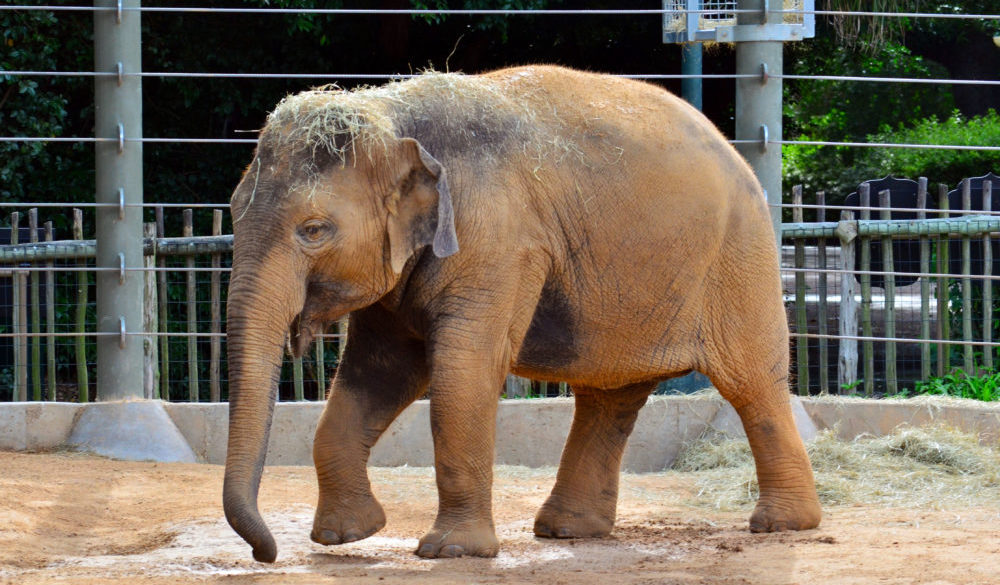
Recently doubled in size, the elephant complex provides more yard space to the nine-elephant herd, along with an elevated boardwalk for guests to observe the elephants in their new 160,000-gallon pool. Time it right and you can view the daily elephant baths inside the nearby barn that connects the two habitat areas.
Heading further up the path from the elephants, you’ll find the grazing okapi, bongos, and anteaters across from the felines.
Jaguars, cougars, tigers, lions, and cheetahs dot the area just past the elephant habitat, as well. If you’re most interested in seeing them being active, then aim for a cooler afternoon. Warmer days render these kitties hidden away in the shade, taking cat naps.
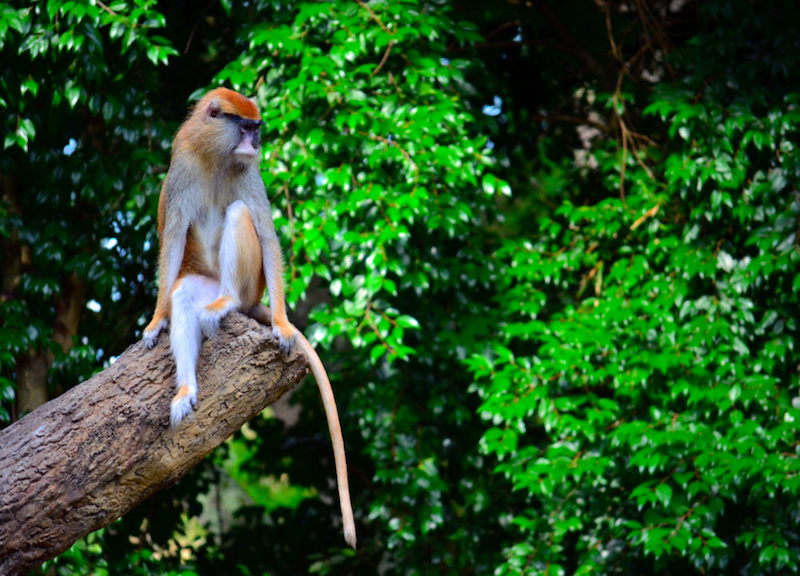
Wortham World of Primates
Turning back from the cougar and tiger exhibits, a small path leads visitors into the Wortham World of Primates, an area that features rare and endangered primates.
Here, you’ll be able to see a wide variety of animals from the colorfully-snouted mandrill, to the mustachioed patas monkey and ring-tailed lemurs, among many others.
If you’ve timed your tour through the World of Primates well (between 11am and noon), then you might have a chance to catch the singing duet of siamang gibbons. Living in a netted enclosure found on the boardwalk, the male and female siamangs take turns with loud, resonating whoops and barks.
Their songs can reach decibel levels near 100 (close to that of a rock concert) and can be heard from many areas around the zoo.
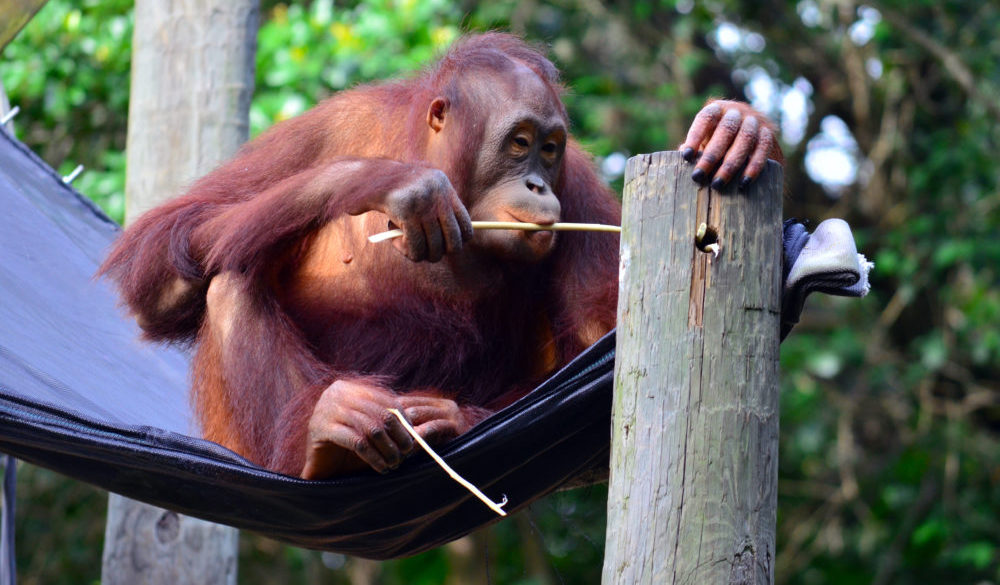
Before leaving the World of Primates, be sure to stop by the orangutan habitat where you’re likely to find Rudi Valentino. At over 40 years old, Rudi is one of the highly intelligent primates living at Houston Zoo and enjoys greeting visitors at the glass, likely making him one of the most selfie’d animals in the park.
After making your way through the World of Primates, exit the way you’ve entered (near the cougar habitat) and head further along the left path that will lead you to the African Forest.
The African Forest
Opened in 2010, the African Forest guides visitors through a themed area of the zoo that houses the beloved gorillas and chimpanzees, white rhinos, and giraffes.
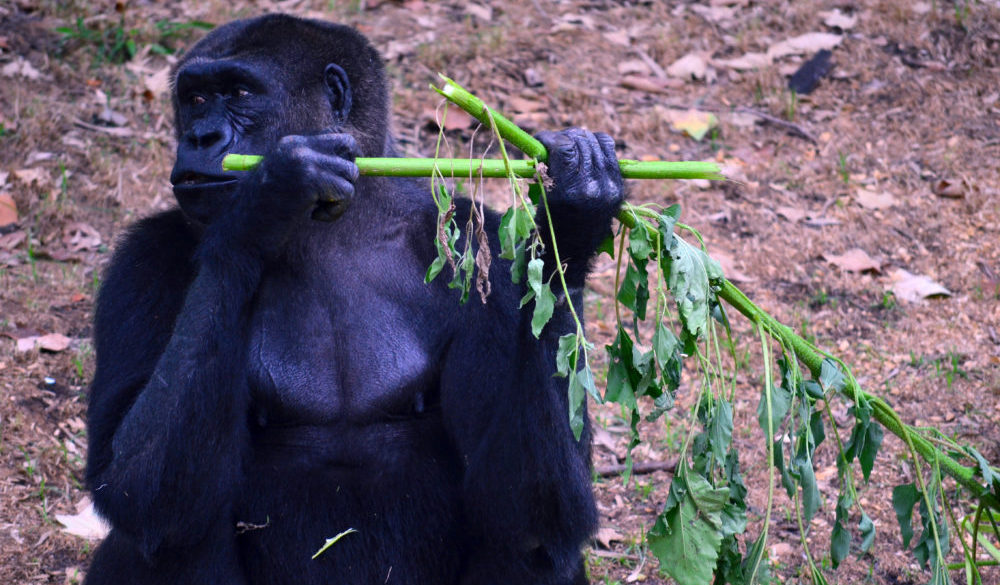
Follow the paths to the elevated platform observing the multi-level habitat for the zoo’s six gorillas. Houston heat will drive the gorillas into their shaded cave in the back of the habitat, so make sure you’re able to stop by before the afternoon sun hits its peak.
Of course, that doesn’t mean you’ll be left out in the heat, as the African Forest provides multiple air-conditioned buildings to observe the animals from within.
Nearby the gorilla habitat, you’ll find one such building to observe and interact with the chimpanzees that are often found resting at the glass walls.
An additional area on the other side of this building grants visitors an up-close view of the gorillas within a recreational area.

Exiting from here will bring you back outdoors and past the dirt and mud-covered white rhinos, as well as the long-necked Masai giraffes.
Lunchtime with Giraffes
The family of giraffes at Houston Zoo share an extensive habitat with a pair of ostriches and are keen to play in front of visitors.
Watch from afar or head around the exhibit to the giraffe barn, where you might spot the towering animals getting a bath and interacting with zookeepers.

Stopping by around 11am or 2pm also provides an opportunity to feed the giraffes. For $7, guests receive three leaves of romaine lettuce and are led to a feeding platform where any of the giraffes are likely to reach for your offering with their slithering black tongues.
This area of the park also makes for a great rest stop before tackling the other half of the zoo. Nearby the giraffe exhibit, you’ll find the other restaurant on campus, Twiga Cafe, the Shani Market gift shop, a small water play park (don’t forget a change of clothes), and the wildlife carousel.
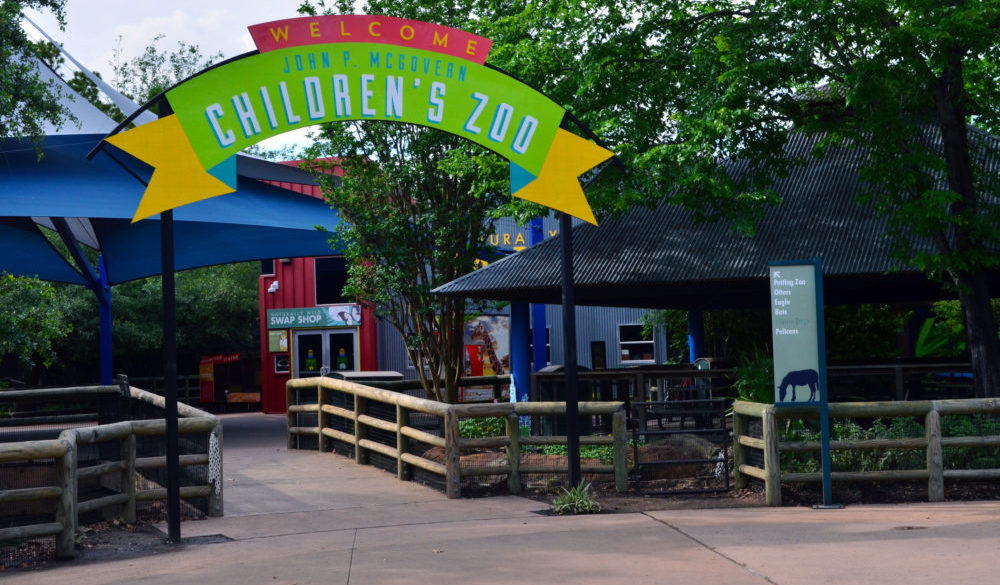
John P. McGovern Children’s Zoo
Just around the carousel is the entrance to the John P. McGovern Children’s Zoo, an area that features additional animal exhibits including the porcupine, otter, and bald eagle.
A petting zoo, open 10am to 5pm daily, also offers guests a chance to reach out and touch a small collection of goats and sheep.
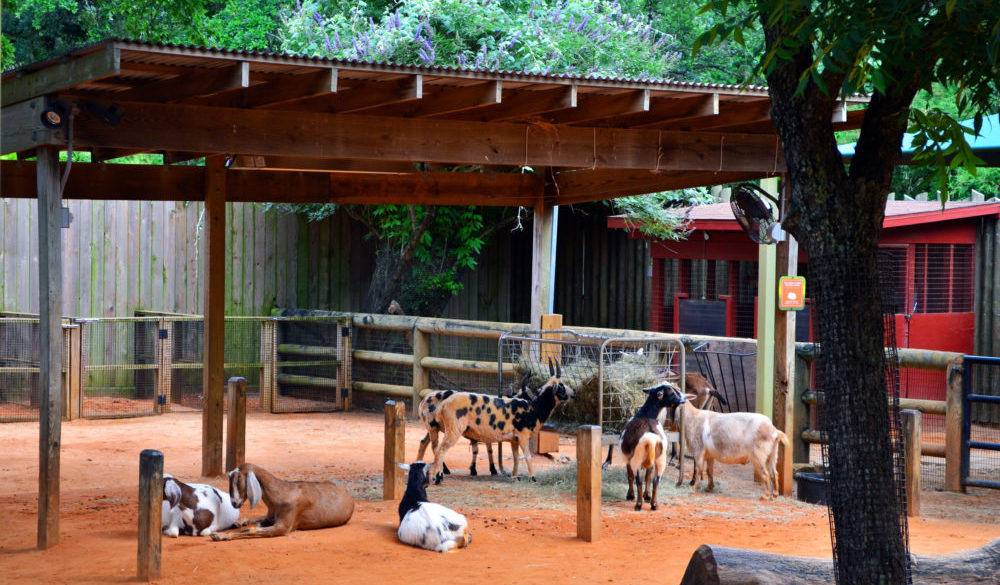
This bustling area of the park also provides shaded picnic tables, making it a popular spot to dig into lunch.
Leaving the Children’s Zoo area, head left away from the carousel and make a quick stop at the Bug House.
Colorful beetles, centipedes, millipedes, tarantulas, scorpions and more help educate visitors on the importance of insects and spiders to various ecosystems – while likely grossing out a few guests.
Beyond the Bug House, you’ll make your way to one of the last sections of the Houston Zoo that is home to a wide-ranging collection of birds from around the world.
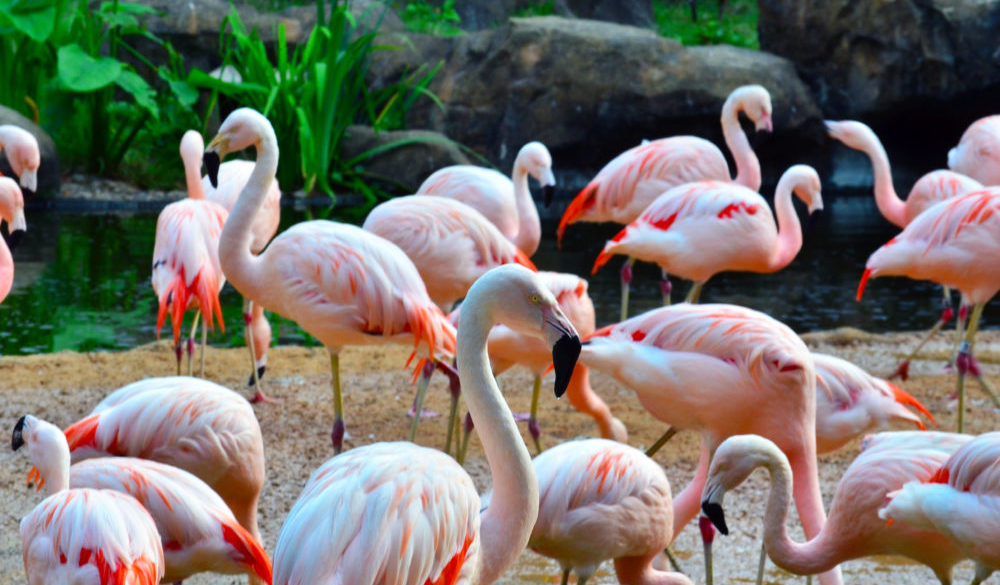
Birds of the World
A flock of flamingo perch on a small island in an idyllic pond, making for terrific photo opportunities while the nearby bird enclosures are filled with peacocks, parrots and many more among the 800 individual birds that call Houston Zoo home.
Wrap up your visit with these avian friends by ducking into the Tropical Bird House. The air-conditioned building that sits next to the reflection pool provides an indoor exhibit space filled with colorful birds of many sizes.
After passing by the exhibits behind glass, the birdhouse opens up as you walk across a platform, surrounded by the fluttering wings of brightly-colored birds. Take a moment and play a round of “I Spy” as you try and find well-camouflaged birds in trees, behind bushes, perched near the roof, or often right in front of you.
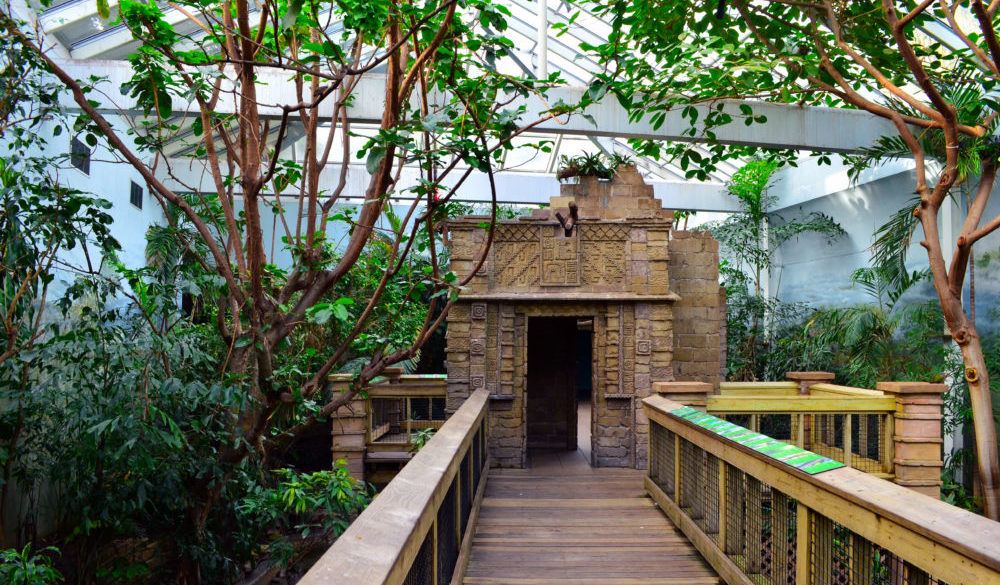
Final Stops
On the other side of the reflection pool, the Reptile & Amphibian house offers a brief air-conditioned tour around frogs, lizards, a chameleon, and several snakes, including the giant anaconda that greets visitors at the main doors.
Nearby, the Explore the Wild! Nature Play Space provides a small playground that helps kids interact with nature. Mud pits, sandboxes, small pools of water, a rock wall, and an area where sculptures can be built with sand and tree branches highlight an area that enriches the zoo experience for kids, big and small.
Finally, the Kipp Aquarium, just inside the main entrance, sends guests on a darkened path around tanks filled with giant fish, small and colorful tropical fish, bright yellow moray eels, seahorses, jellyfish and more.
Once outside the Kipp Aquarium, the nearby gift shop just feet away from the exit serves as a final cap to a successful Houston Zoo visit.
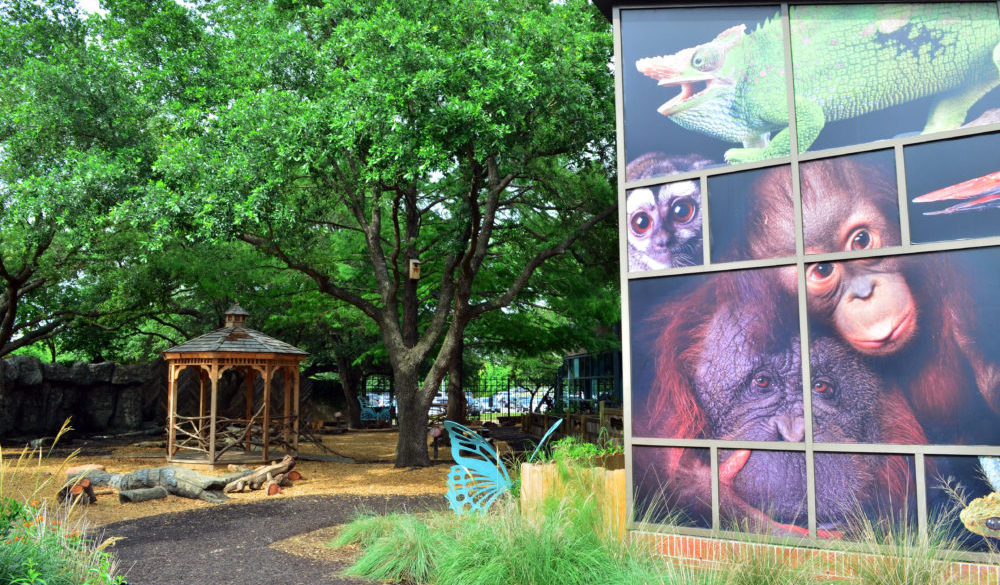
Finding Food & Drink
Aside from the Macaw and Twiga Cafes, you’ll find plenty of mobile stations at various areas around the Houston Zoo. Dippin’ Dots, popcorn and cotton candy vendors, beer gardens, and food trucks help ensure that you’re never too far away when hunger strikes.
Enhancing Your Houston Zoo Visit
For those clamoring for in-depth experiences, the Houston Zoo offers unique encounters to enrich your visit.
With prices ranging from $90 to over $200, guests can book an Animal Encounter, bringing you up close and personal with some of the zoo’s residents, or a Behind the Scenes Experience where you’ll tag along with zookeepers into many of the staff only areas of the Houston Zoo. Full day zoo admission is included with the cost of an Encounter, and a portion of these purchases go towards animal conservation efforts.
While those experiences should be booked several days ahead of your visit, there are still opportunities to get more from your day at the Houston Zoo with scheduled talks, feedings, and more that comes as part of the daily schedule of activities.
Before your visit, take a look at the daily schedule so you know where to be at the Houston Zoo for your favorite animal interactions.
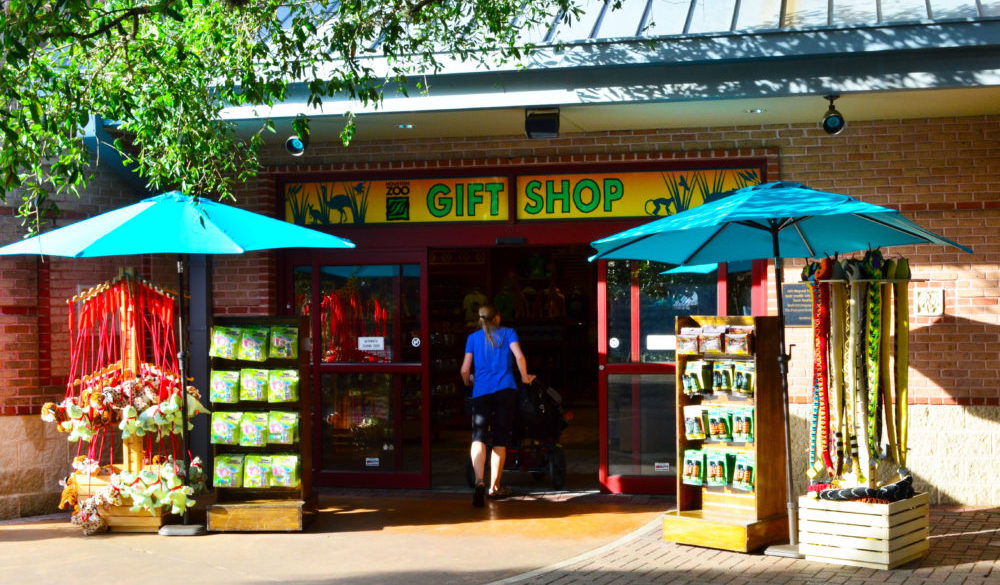
Tips for Visiting
If you want take your Houston Zoo visit to another level, overnight stays are available for $75 per person. From 7pm to 9am, guests sleep over at the zoo and take part in special programming around the park with zookeepers. More information on Zoo Overnights can be found on the Houston Zoo website.
Come winter, the Houston Zoo transforms for Zoo Lights, an annual celebration with special nighttime hours. With holiday drinks in hand, guests stroll through the twinkling zoo illuminated by over two million Christmas lights. Generally, on the calendar from November to January, Zoo Lights information will be posted on the website when available.
If you want a sneak peek before dropping by, check out the animal webcams on the Houston Zoo website to view gorillas, giraffes, elephants and more.
Houston Zoo
- Location: 6200 Hermann Park Drive, Houston, TX 77030
- Phone: 713-533-6500
- Hours: 9am to 7pm daily; last entry at 6pm
- Parking: Free parking available at lots surrounding the Zoo entrance on Hermann Park Drive. Overflow parking at McGovern Centennial Gardens and metered parking available on surrounding Museum District streets.
- Admission: Adults 12 and up are $19; children ages 2 to 11 are $15; seniors 65 and up are $12.50. Click here to check the Houston Zoo website for information on discounts.
